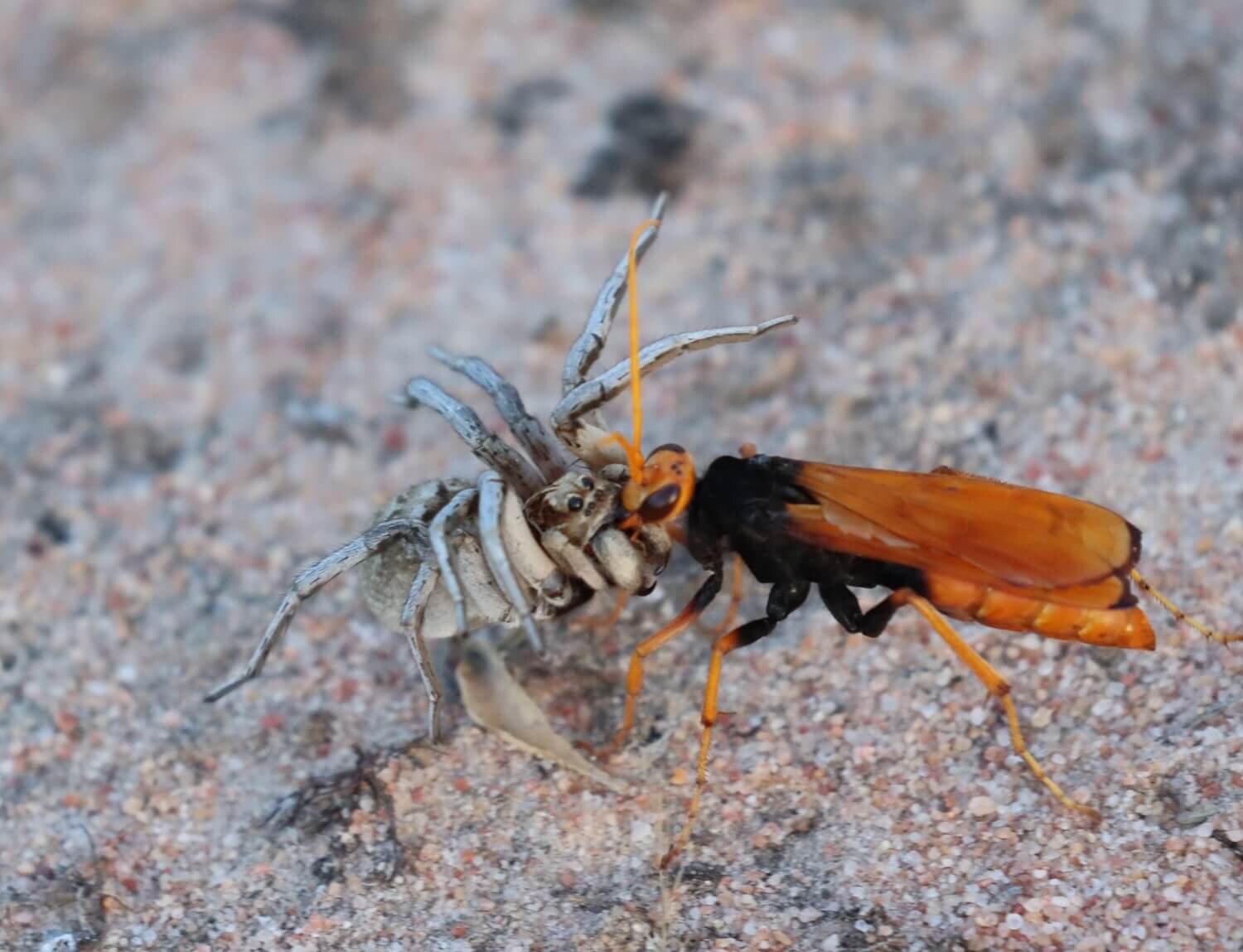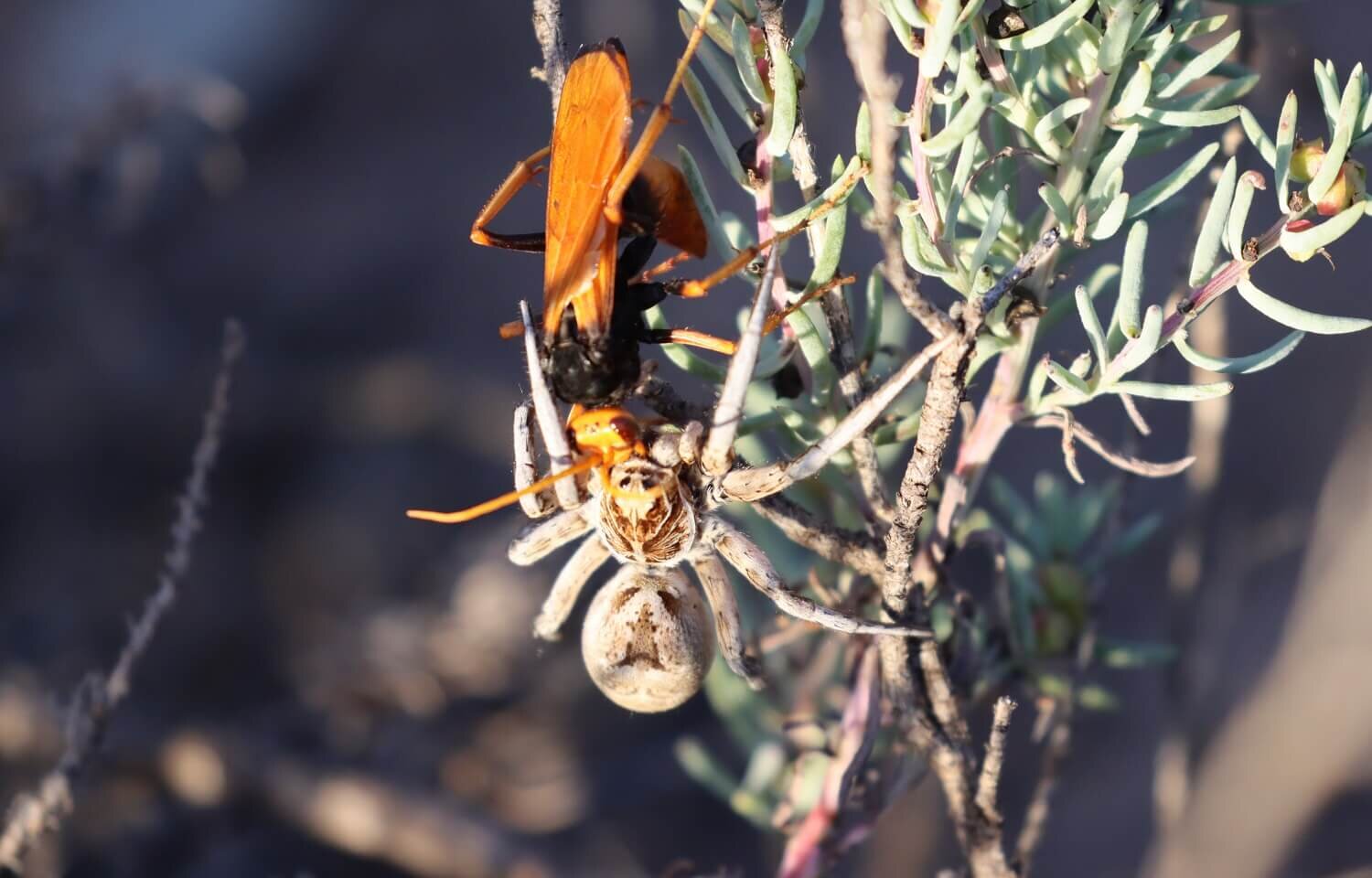Spider Wasp versus Wolf Spider
I recently spent far too long watching this Spider Wasp (Cryptoceilus sp.) drag a Wolf Spider for 55 metres (!!), before stowing it in her nesting burrow. I watched the initial attack, where she paralysed the spider (and I fumbled for the camera), and then I followed her as she made her way to her burrow.
She showed an amazing sense of direction as she dragged the spider backwards, up and over sticks and small bushes. She held the spider carefully by the chelicerae (its jaws) and stopped to rest only occasionally. Once, after 45 metres, she dragged the spider to the top of a small bush and left it whilst she went on a flight. She seemed to be re-orienting and reassuring herself that her burrow was nearby because she returned immediately and set off with renewed vigour, spider in tow.
Dragging the spider by its mouthparts
Dragging it up a bush …
Having a little rest …
And finally, after 55 metres, stashing it in the nesting burrow.
I was sure there would be an exciting climax as she approached the burrow, but the wasp did not hesitate, and quickly disappeared with her her shopping to stock up her larder.
Spider Wasps are solitary wasps which aren’t aggressive and don’t form colonies. They usually feed on nectar but hunt spiders to provide food for the wasp larvae. After stinging the spider to paralyse it, the female wasp lays an egg on the spider's body, and seals the spider in a chamber at the end of the nesting burrow. The larva hatches and feeds on the bodily fluids of the spider … eeew!
More information:
Spider wasp venom is a complex cocktail of potential new therapies for Alzheimer’s, epilepsy, bacterial infections and more. … There are around 500 Australian spider wasp species. Only 260 have been described and there are at least 140 waiting in insect collections. CSIRO’s Australian National Insect Collection





